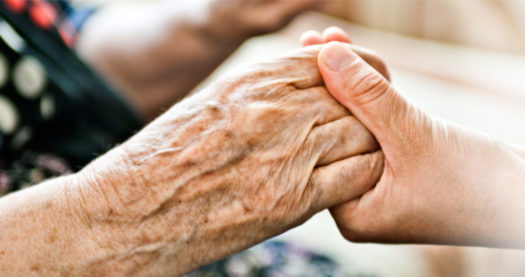
Making the decision to move yourself or a loved one into some type of dependent care or assisted living facility is one of the most difficult things to do. You want to do what is best for all concerned. Often this decision does lie on the shoulders of a spouse or child, so it can be difficult to find the best way to help the individual warm up to the idea and understand the reasons why they need to be there. Mother understood the reasons and agreed, but I knew that it was the last place she wanted to be. Even though she had owned and operated a nursing home for decades, she had told me for years that she never wanted to live in one. She also did not ever want to be a burden to her children or grandchildren. She accepted the idea as a temporary place for her to heal and get better. She was also comforted in the fact that her granddaughter and I would be able to come and see her every day. This type of arrangement might not be possible for other families, but I cannot stress enough the importance, not only to your loved one’s well-being and happiness, but also to keep an eye on the level of care they are receiving.
In the previous post, I mentioned the caregiver to patient ratios. It is not an exaggeration that in almost any type of dependent care facility, the ratios are terrible. The best I have seen it anywhere is 1 caregiver for every 7-8 patients. If even just 50% are not able to do most of their personal care without the aid of another person, it is an overwhelming task. These caregivers often work long shifts with little pay. The facilities will tell you that the turnover for these employees is high. They will also tell you that they know they are “stretched to the limits, but they keep on staff the ratio that the health department suggests as the minimum number and that is all they can afford.”
This comment leads me to discuss the costs. Different places will charge different rates, but none of them are lower than independent living. It is probably average in the State of Texas for the rate to be $140/day + extras. These extras include medications, physical therapy, doctor’s visits, lab tests and incontinence supplies. For those seasoned life people who are 65 and older that qualify for Medicare, you will be covered as a patient in a skilled nursing facility for up to 100 days. Medicare paid a great portion of Mother’s expenses, but not all. This is where supplemental insurance is crucial. This second insurance will pick up most of the other costs up to the limits within your policy. Mother had also planned ahead and purchased hospital income insurance and prescription insurance. What is difficult is what do you do when you or your loved one needs to be in a place such as this for more than 100 days or you do not qualify for Medicare? There are several options, but you need to plan ahead for these or it can break the bank and fast.
Long Term Care insurance is the number one thing I would recommend everyone obtain. It is expensive, but is way less of a cost to you if you ever find yourself in a similar situation. Without insurance, self pay is an option, but be prepared for expenses of $7000-$8000/mo. You can get a caregiver service to come to your home or assisted living facility, but be prepared to shell out $30-40/hr. If you are a veteran or wife of a veteran, you should be able to get some assistance in paying for long term care, but it can take some time to apply and the amount they pay may be based on your income. In the State of Texas, lower income people can apply for Medicaid. Elder care attorneys can assist for applying for assistance with these agencies; however, they in themselves charge hefty fees. I was told $10,000 for one I talked to on Mom’s behalf. I chose not to hire one. These elder care attorneys will also tell you about “strategies” to re-allocate your money and income in order to help an individual qualify that would not ordinarily qualify. These strategies made me skeptical, but I imagine they are legal.
I also learned more about hospice care services in this stage, as well. I think most people, like me, thought that hospice care is for people who are on their death bed. I learned that they offer services to individuals and families who just need help with an ill loved one. It is not full time assistance, but they can help a few times a week with certain things.
In the next entry, I will share more about what happened in this skilled nursing facility ……

